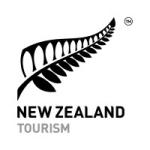Pukaha Mt Bruce opens new kiwi experience
A long awaited new conservation experience has opened, where visitors will have the chance to get up close and personal with New Zealand’s iconic native bird - the kiwi.
The kiwi nocturnal house at Pukaha Mt Bruce - north of Masterton in the North Island - has undergone a NZ$1.3 million upgrade and expansion, and now offers visitors an intimate experience with kiwi.
Kiwi breeding programme
The Pukaha Mount Bruce centre’s previously behind the scenes kiwi breeding programme is now housed inside the kiwi house.
This means for the first time visitors can see into new kiwi incubation and brooder rooms - bringing the work of incubating and hatching eggs, and raising and feeding kiwi chicks into the public eye.
The centre now has enlarged, landscaped kiwi enclosures that will have at least two adult kiwi on show year-round to the public, with capacity to display up to four.
And a new 50-seat theatre continuously screens three short films to draw the links between the breeding programme and the pest control and forest restoration work at Pukaha.
Along with the new kiwi facilities, visitors can see a live critters display, and Pukaha Mount Bruce has created an improved tuatara enclosure with viewing.
Community effort
Pukaha Mount Bruce is a community funded and inspired effort, supported by the Department of Conservation (DOC), businesses and individuals.
The new facility gives the centre the opportunity to make the links between the breeding programme and release of kiwi into the wild, says Pukaha Board chairman Bob Francis.
"Our visitors tell us seeing a kiwi is the ‘must do’ on their visit. The new facility provides a great environment for our young kiwi, adult display kiwi and visitors and staff who work there.
"It will contribute to a greater understanding of our work to return kiwi to our native forest and to other parts of New Zealand."
Breeding season
Pukaha Mount Bruce is currently in the thick of its most successful kiwi breeding season to date, following transfer last year of 30 kiwi from Little Barrier Island - off the northeastern coast of the North Island.
The kiwi have produced numerous eggs and chicks, enhanced the Pukaha Mount Bruce kiwi gene pool and bred more quickly and prolifically than anticipated, with the breeding season expected to last until April.
DOC rangers will be working with some of the kiwi chicks and eggs in the new facilities, while a number of other kiwi chicks are being raised nearby in a fenced area outside.
Captive breeding facility
Pukaha Mount Bruce is an internationally recognised captive breeding facility for a number of threatened New Zealand bird species.
The centre became the first place in New Zealand to use captive breeding for conservation - breeding endangered species in human controlled environments with restricted settings - when local farmer and amateur ornithologist Elwyn Welch devised an innovative plan training bantam hens to foster takahe chicks.
Back in 1948, Welch partnered with Dr Geoffrey Orbell to help save the takahe - a flightless native New Zealand species that had not been sighted since the 1890s.
Orbell, however, was convinced that takahe still existed and, along with friends, eventually tracked a set of takahe footprints in the South Island’s remote Murchison Mountains.
The discovery of the takahe (Notornis mantelli) caused a sensation around the world, and Orbell and Welch worked together using captive breeding to save the takahe from extinction - the same method that’s now used for other species such as kiwi.
Pukaha Mount Bruce reserve
The centre also works to restore the Pukaha Mount Bruce reserve, by using an aggressive pest control programme.
The restoration of the native Pukaha Forest began in 2001, with the aim of returning the dawn chorus to the area through the reintroduction of endangered native birds.
Pukaha Mount Bruce made the decision not to hide the birds on islands or barricade them away, but to lay down trap lines and put out bait stations against predators such as possums, rats, stoats and ferrets.
The success of this enabled kokako and kiwi to be reintroduced into the unfenced reserve in 2003 - species which had been absent from the area for 60 and 100 years respectively.
Since then kiwi, kokako and kaka have all bred successfully in the wild of Pukaha.
Activities at Pukaha Mount Bruce include guided tours and talks, eel feeding, a kaka circus where visitors can see the native birds being fed, tours of the kiwi house and an interactive gallery.
Background: Kiwi
The kiwi is a nocturnal flightless bird unique to New Zealand.
There are five species of kiwi - all endangered to some extent - but large areas of their forest habitats are protected in reserves and national parks by Department of Conservation workers.
A kiwi is about the size of a domestic chicken, and lays the largest egg in relation to body size of any species of bird in the world.
Kiwi are a national symbol of New Zealand, and the term ‘Kiwi’ is often used to describe people who come from New Zealand.
